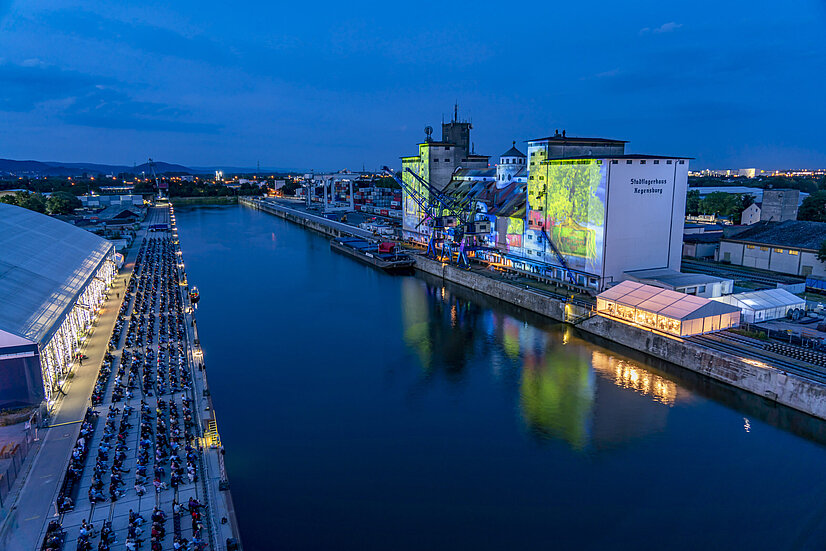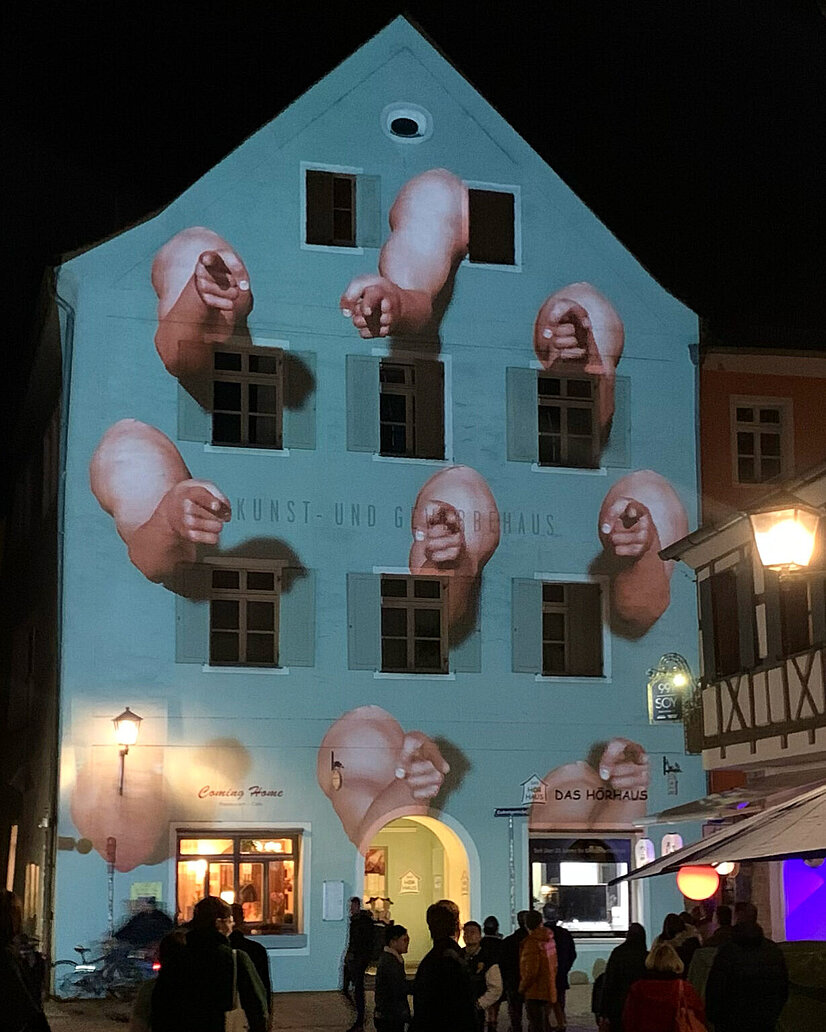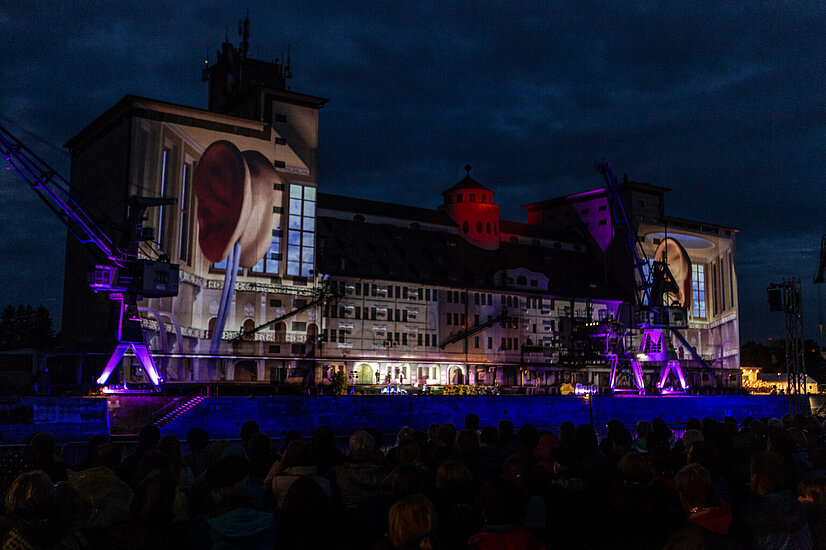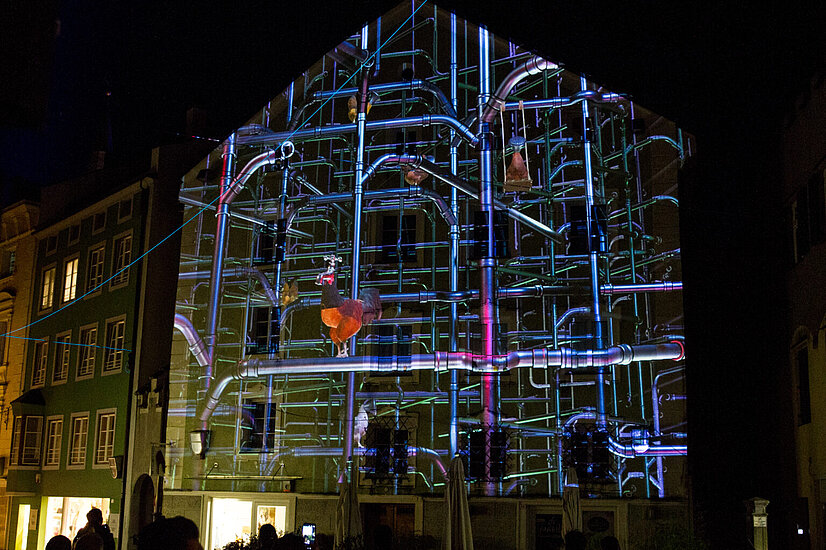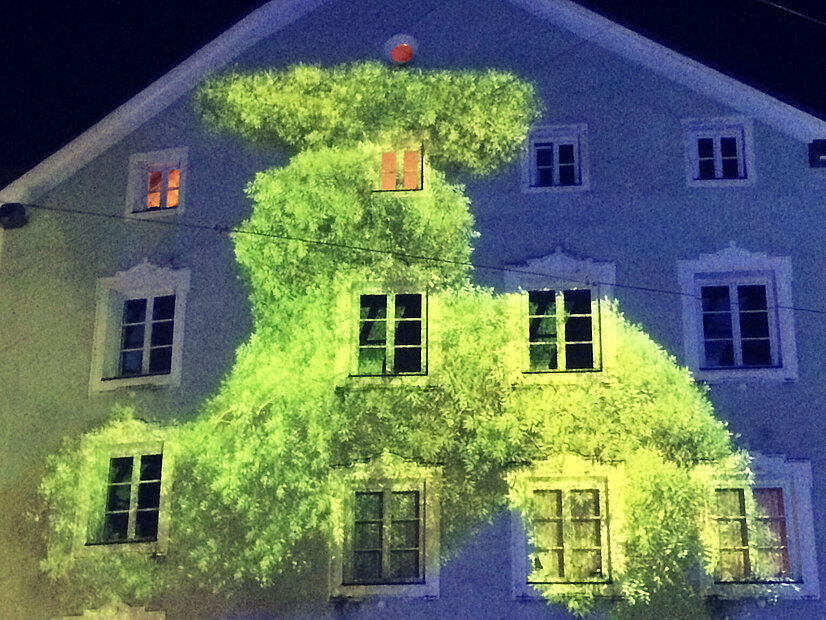How did Clemens Rudolph go from being a juggler and fire artist to creating 3D projections on facades and in virtual spaces? Why did an image manipulation of a saiga antelope inspire him to create his logo? And what does his early experience with computers as an eight-year-old have to do with his work today? In our interview, Clemens provides insights into his exciting career and explains how he rethinks digital art and implements it in public spaces with his production company Antrilope.
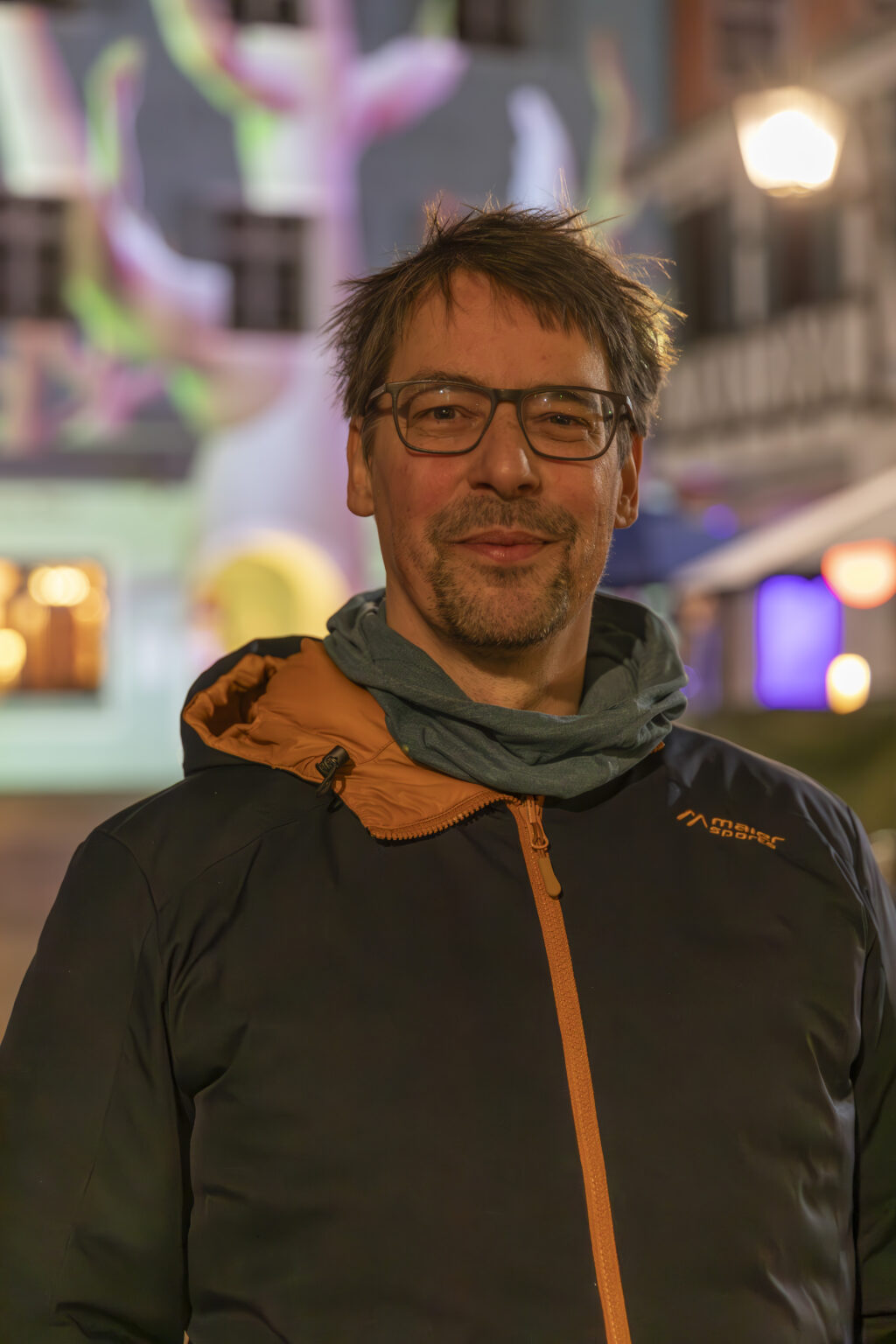
Media artist & projection expert
Clemens Rudolph is a freelance producer and artist for film, computer animation and computer graphics. With his production company Antrilope, he creates impressive projections on facades, rooms and objects.
Whether digital opera stages, 3D reconstructions or large-scale façade mappings - Clemens brings art into public spaces and creates immersive experiences.
My biggest milestone is that what I do fulfills me and that I can make a living from it. I am happy that there are people who appreciate my art and are "touched" by it.
Clemens Rudolph
Dear Clemens! You are a freelance producer and artist for film, computer animation and computer graphics and have your own production company. You chose the mythical creature Antrilope to give your company its name. Tell us briefly: What is the Antrilope all about and what characterizes this creature?
At some point, I came across an image manipulation of a saiga antelope on the Internet. In the picture, the animal's horns, eyes and nose had been tripled in size. This gave the animal something mystical, but also something funny. The saiga antelope looks funny in itself with its trunk-like nose. The image was the inspiration for my logo. I see in it analogies to aspects that are important to me, such as depth, poetry, surreality, but at the same time humor and lightness. Another connection: The antelope lives in vast steppes. Vastness and freedom are definitely important to me. But unlike the antelope, I am not a herd animal. My name, AnTRIlope, is a play on the words antelope and tri (Latin for 3D).
On your homepage you write that the Antrilope is said to have the ability to travel through time and space and to have a lot of imagination. Does this also apply to you or would you like to have these abilities yourself?
I definitely have imagination, and a lot of it flows into my work - regardless of whether I work on a commission basis or as a free artist. Unfortunately, I only travel through time on the Internet. When I'm looking for themes and inspiration, I travel to all kinds of eras, (art) techniques or events.
Your artistic career began in street theater, where you performed as a juggler, but also in fire and clown shows. From this very analog form of art, you are now mainly at home in the field of (digital) film and media art. How did this change come about?
Digital was in my life very early on. Our first computer was a Sinclair ZX81 with 16 kB (!) memory expansion in around 1981. I was eight years old at the time. Since then, computers have always played a role in my life. As a teenager, I started making videos - even then I was self-taught.
I don't remember how juggling came into my life. But it financed a few years of my "vagabond" youth. At some point, I started producing promotional material for us and other street artists: Flyers, websites and videos. I earned more money and had to practice less. So one thing became more and more and the other less and less. After a few more twists and turns in my CV, I finally arrived at media art.
Artistically, you have specialized mainly in projections on facades, rooms and objects as well as 3D graphics and animations. What techniques do you work with and what do you enjoy most about them?
My works are mainly created in virtual 3D space. I work with the BLENDER program. I use it for concepts, planning and implementation. Sometimes I also use video footage and photos I've shot myself. Another technique is point clouds from 3D scans.
All projects have their own special appeal. Each time, I have to engage with the building and the location not only in terms of content, but also aesthetically. What's also exciting for me is that with the mappings, I see the work on site for the first time in the context for which it was intended. I can't test it beforehand because the (projection) technology is too complex and expensive. I do use VR to get a better idea of the effect and timing beforehand, but a lot of it is experience. Seeing an animation on my monitor is simply something completely different to seeing it on a 60-metre façade. So it's all the nicer to realize that many things work as hoped.
Many of my mappings can be seen in public spaces. I think it's good that this allows a very low-threshold approach to art and that a dialog or intervention with the location can take place. I also love having an audience - that has stayed with me from street theater. In contrast to back then, I can now look at people and their reactions to my work in peace and talk to them about it.
How has your work developed over the years and what are some of the most important milestones you have achieved?
I was always a seeker and wanted to start and learn new things. In the meantime, I have become calmer and more focused, although my curiosity has not diminished. But I wouldn't want to miss the "restless" times - I learned a lot from a wide variety of areas. Much of it flows into my art, be it dramaturgical, aesthetic, technical or organizational understanding.
My biggest milestone is that what I do fulfills me and that I can make a living from it. I am happy that there are people who appreciate my art and are "touched" by it.
You also make your skills available for client projects and have already worked with BMW, OSRAM, ARD and BR, among others. What has been your most exciting and challenging project to date, and why that in particular?
The two operas Tosca and Rheingold were the most exciting, biggest projects in terms of personnel and the longest, lasting over an hour and a half. They were performed open air by Theater Regensburg in the harbour, with live singing and a symphony orchestra. Around 3,000 people attended each performance. An old, 100 m long and 40 m high warehouse behind the singers was my projection surface. My content was a mixture of stage design and artistic interpretation of the content. I also integrated a mixed live camera feed.
Because the orchestra didn't play at the same tempo as I had when creating the content, I couldn't just play a video, but had to switch many short clips one after the other. Someone next to me read the score and gave me the previously discussed cues. A timing error would have been hugely visible to everyone. Fortunately, everything went well and it was a really nice experience for me.
Last but not least: What are some of the future projects you are working on and what can we expect from Antrilope in the future?
I am currently working on the 3D reconstruction of the Fulda Synagogue. It was destroyed during the Reichspogromnacht in 1938. I only have old plans and a few black and white photos as a basis. The interior is decorated with beautiful (wall) ornaments. Restoring the synagogue on the basis of the thin database sometimes gives me a headache.
I am very grateful to be working on this project. On the one hand, it's like a cultural obligation for me, and on the other, I find the use of 3D here really useful. People can now perhaps get a better idea of what has been lost here.
Apart from that, I hope to design many more mappings and installations around the world.
The Bavarian cultural and creative industries are vital, cooperative, polyphonic and relevant to the future. We introduce you to Bavarian players. What is their business model? What drives them?
Would you also like to answer a few questions and be part of our "bayernkreativPORTRAIT" campaign? Then send us an email to kontakt@bayern-kreativ.de with the keyword "bayernkreativPORTRAIT".
